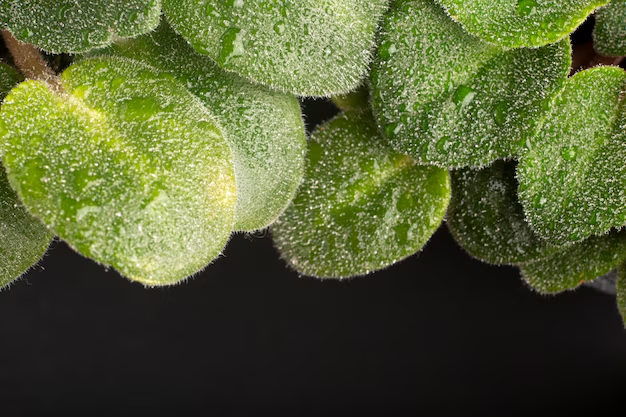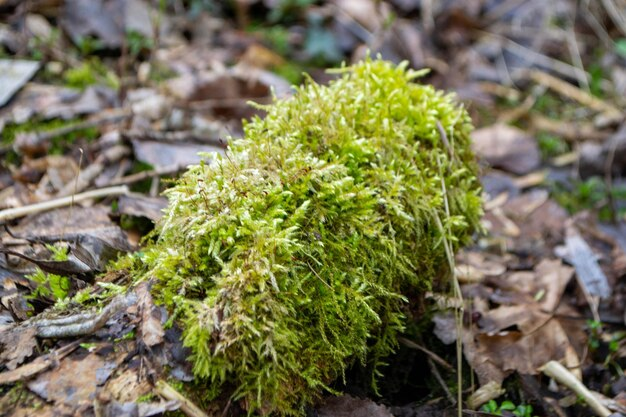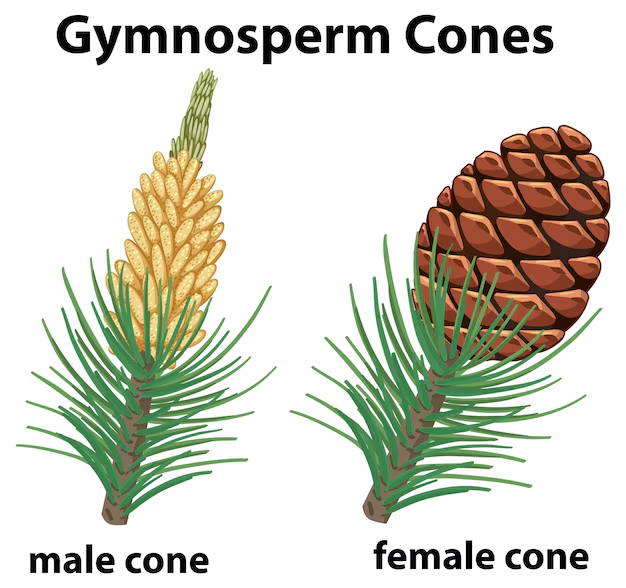Plant Kingdom Classification with Examples
Understanding the Plant Kingdom, also known as Kingdom Plantae, is fundamental in biology. Kingdom Plantae encompasses all plants, which are essential for life on Earth due to their ability to produce oxygen and serve as the base of food chains. In this guide, we will learn about the characteristics, classification, and various members of the plant kingdom, providing a comprehensive overview suitable for all grade students.
Also Read: Origin of Life on Earth
Characteristics of Kingdom Plantae
Plants belonging to the Plant Kingdom exhibit several distinct characteristics:
Eukaryotic and Multicellular: Members of Kingdom Plantae are eukaryotic organisms with complex, multicellular structures.
Autotrophic Nutrition: Plants are autotrophs, meaning they produce their food through the process of photosynthesis, using chlorophyll pigments in their chloroplasts.
Cellular Structure: Plant cells have a rigid cell wall made of cellulose, a large central vacuole for storage, and various organelles for specific functions such as support, reproduction, and photosynthesis.
Non-Motile: Unlike animals, plants are generally non-motile and remain anchored to one place.
Reproduction: Plants can reproduce both asexually (through methods like vegetative propagation) and sexually (via the production of seeds and flowers).
Differentiated Organs: Most plants have well-differentiated organs such as roots, stems, and leaves, each performing specific functions.
Vascular System: Many plants possess a vascular system comprising phloem and xylem for the transportation of water, nutrients, and food.
Also Read: Kingdom Animalia, Plants, and Virus
Classification of Kingdom Plantae
The classification of Kingdom Plantae is based on several criteria, including plant body structure, the presence of a vascular system, and seed formation. Below is a detailed classification chart with examples:
Plant Kingdom Classification Criteria
Plant Body: Presence or absence of a well-differentiated plant body with roots, stems, and leaves.
Vascular System: Presence or absence of specialised tissues (phloem and xylem) for transporting water and nutrients.
Seed Formation: Presence or absence of seeds and flowers, and whether seeds are naked or enclosed within fruits.
Also Read: Xylem and Phloem
Five Major Subgroups of Kingdom Plantae
1. Thallophyta

Description: Thallophytes have a simple, undifferentiated body structure known as a thallus. They lack true roots, stems, and leaves.
Examples: Green algae (e.g., Volvox), red algae (e.g., Polysiphonia), and brown algae (e.g., Fucus).
2. Bryophyta

Description: Bryophytes are non-vascular plants that do not have a true vascular system. They possess root-like, stem-like, and leaf-like structures but require water for reproduction.
Examples: Mosses (Funaria), hornworts (Antheoceros), and liverworts (Marchantia).
3. Pteridophyta

Description: Pteridophytes are vascular plants with well-differentiated organs. They reproduce via spores and do not produce seeds.
Examples: Ferns (Pteris), clubmosses (Selaginella), and horsetails (Equisetum).
4. Gymnosperms

Description: Gymnosperms are seed-bearing vascular plants with naked seeds not enclosed within fruits. They have a well-developed vascular system and differentiated plant body.
Examples: Pine trees (Pinus), cycads (Cycas), and ginkgo (Ginkgo biloba).
5. Angiosperms

Description: Angiosperms are the most advanced group of plants, characterised by flowers and fruits that enclose seeds. They have a highly developed vascular system and diverse plant forms.
Examples: Mango trees (Mangifera indica), roses (Rosa), wheat (Triticum), and orchids (Orchidaceae).
Learn More: Seed Formation
Plant Kingdom Classification Chart
Cryptogams and Phanerogams
Kingdom Plantae is also categorised into two broad groups based on reproductive features:
Cryptogams:
Description: These are non-flowering, non-seed-bearing plants. They reproduce via spores.
Includes: Thallophyta, Bryophyta, and Pteridophyta.
Phanerogams:
Description: These are flowering, seed-bearing plants. They reproduce through seeds and flowers.
Includes: Gymnosperms and Angiosperms.
Unique Features of Kingdom Plantae
Beyond the standard classification and characteristics, Kingdom Plantae exhibits unique adaptations that allow plants to thrive in diverse environments:
Adaptations to Terrestrial Life: Plants have developed structures like cuticles and stomata to reduce water loss and facilitate gas exchange.
Reproductive Strategies: Angiosperms have evolved complex reproductive mechanisms involving pollinators, which enhance genetic diversity.
Symbiotic Relationships: Many plants engage in symbiotic relationships with fungi (mycorrhizae) and bacteria (nitrogen-fixing bacteria), which aid in nutrient uptake and soil fertility.
Diversity in Morphology: Plants exhibit an incredible range of forms, from tiny mosses to towering trees, adapting to various ecological niches.
Interactive Quiz
Test Your Knowledge on Plant Kingdom!
Challenge yourself with these multiple-choice questions to reinforce your understanding of the Plant Kingdom.
Which of the following is a characteristic of Kingdom Plantae?
a) Motile
b) Autotrophic
c) Single-celled
d) Heterotrophic
Which subgroup of Plantae includes ferns and horsetails?
a) Thallophyta
b) Bryophyta
c) Pteridophyta
d) Gymnosperms
What distinguishes Angiosperms from Gymnosperms?
a) Presence of vascular tissues
b) Seed formation
c) Seeds enclosed within fruits
d) Multicellularity
Which pigment is essential for photosynthesis in plants?
a) Carotene
b) Xanthophyll
c) Chlorophyll
d) Anthocyanin
Bryophytes are often referred to as the 'amphibians of the plant kingdom' because:
a) They can live both in water and on land
b) They require water for sexual reproduction
c) They have both vascular and non-vascular tissues
d) They undergo metamorphosis
Answers:
b) Autotrophic
c) Pteridophyta
c) Seeds enclosed within fruits
c) Chlorophyll
b) They require water for sexual reproduction
Learn More:


FAQs on Plant Kingdom – Members of Kingdom Plantae
1. What pigment is responsible for photosynthesis in plants?
Chlorophyll is the pigment responsible for photosynthesis in plants.
2. What are the main criteria for classifying plants in Kingdom Plantae?
Plants are classified based on plant body structure, vascular system presence, and seed formation.
3. Describe the characteristics of Bryophytes.
Bryophytes are non-vascular, terrestrial plants with simple organs. They require water for sexual reproduction and include mosses, hornworts, and liverworts.
4. What distinguishes Gymnosperms from Angiosperms?
Gymnosperms bear naked seeds not enclosed in fruits, whereas Angiosperms have seeds enclosed within fruits and possess flowers.
5. List some examples of Angiosperms and their significance.
Examples include mango trees (Mangifera indica), roses (Rosa), wheat (Triticum), and maize (Zea mays). Angiosperms are crucial for food, medicine, and ornamental purposes.










